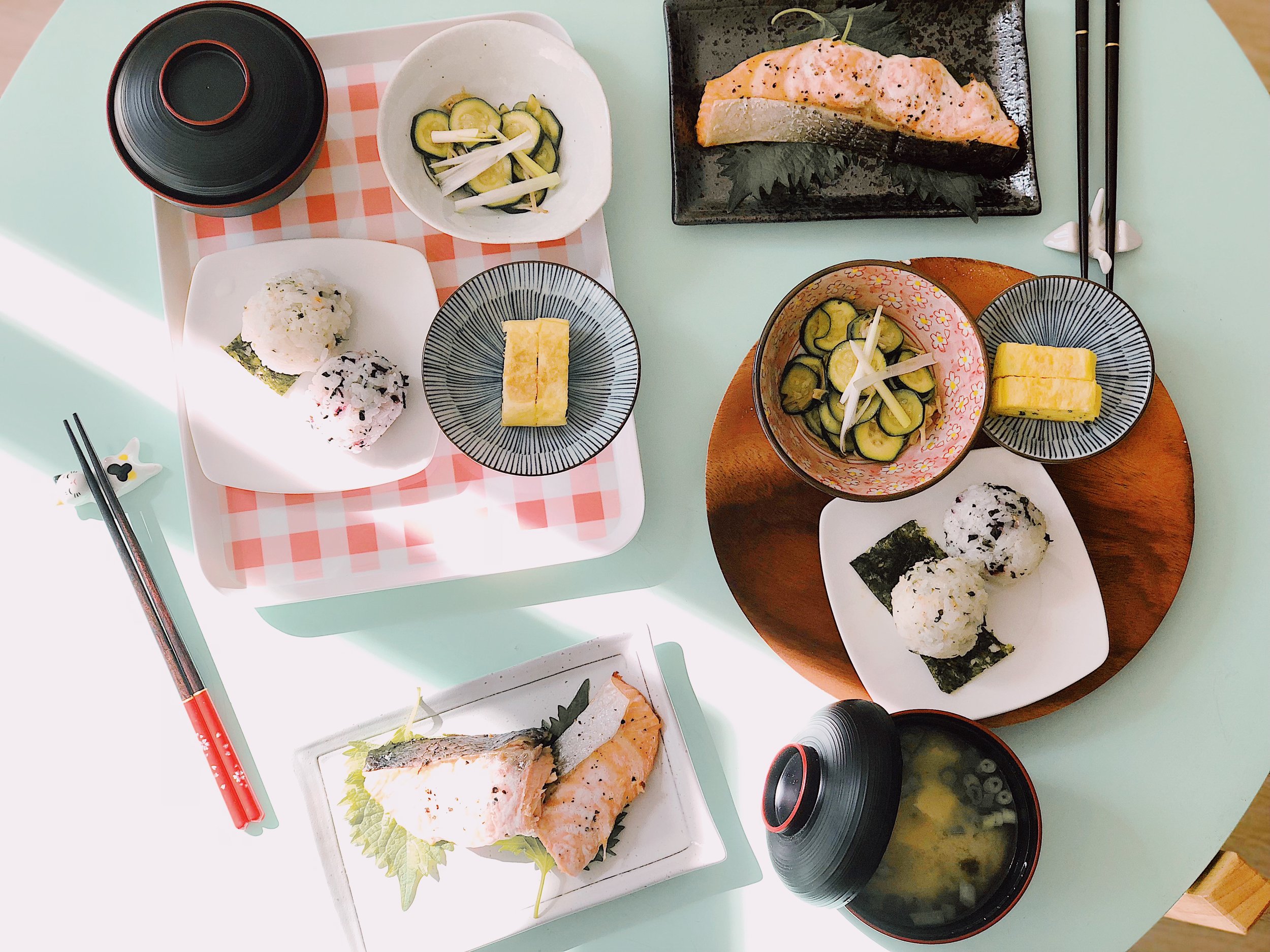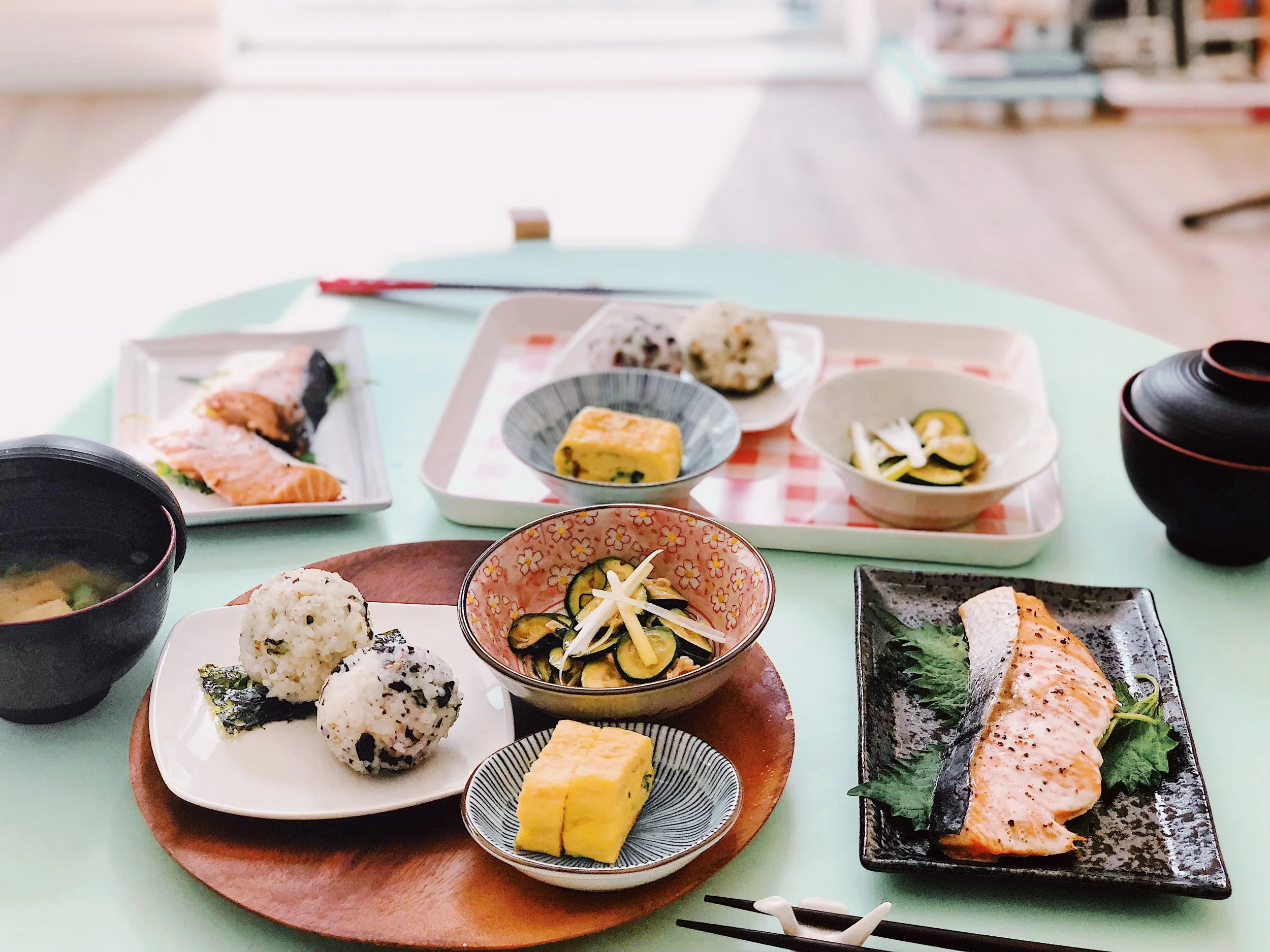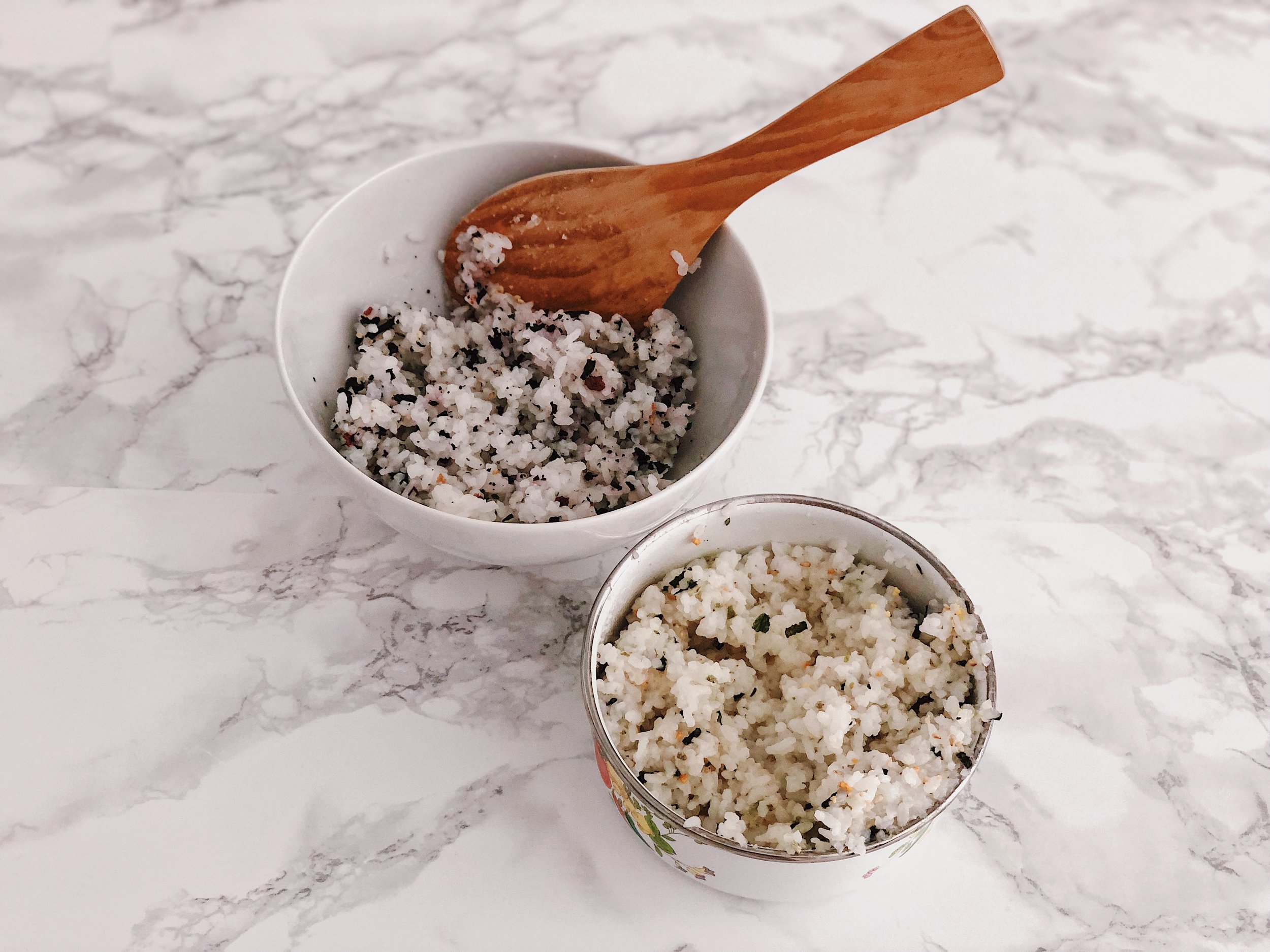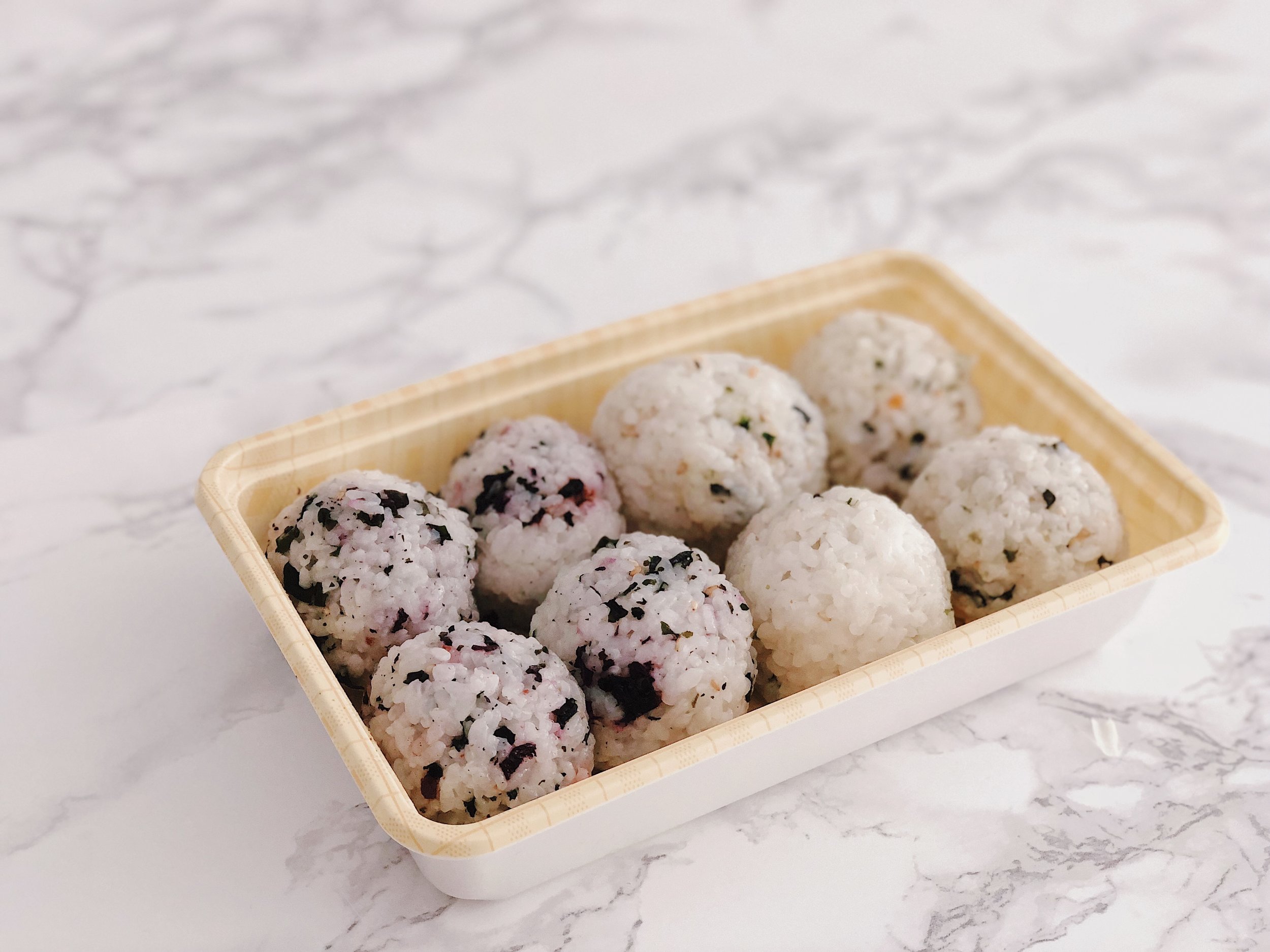Japanese Breakfast
Goodbye pancakes and bacon: move aside and make room for a tastier and healthier alternative: Traditional Japanese Breakfast! I recently visited a brunch spot in San Francisco called Bon, Nene that served this kind of breakfast set, and felt myself feeling quite salty at the end after spending $18 + tax and not feeling very full. So a few weeks ago I headed over to Nijiya market in Japantown to pick up some ingredients to make my own Japanese Breakfast for two (definitely under $18). Shout out to my teammate Emma for eating my creations :)
Otherwise known as 朝食 —choushoku—or 朝ご飯 —asagohan—a traditional Japanese breakfast consists of a variety of fresh ingredients that contribute to a colorful spread (looks like I still remember a bit of Kanji from HS Japanese!). A set will usually contain Miso soup, steamed rice, some kind of grilled fish (yakizakana), rolled egg omelette (tamagoyaki), and more adventurous items like natto (fermented soybeans) and umeboshi (a kind of pickled plum).
Despite the health benefits of natto, I'm not a big fan and so I left it out of the meal. I also replaced the rather sour umeboshi with some sautéed zucchini and enoki mushrooms to fulfill vegetable portion of meal.

My Japanese breakfast consisted of (from left to right, top to bottom): Miso soup, sautéed zucchini and enoki mushrooms, oven-baked salmon, onigiri, and tamagoyaki. These were all fairly easy to make, and I'll try to summarize the recipes to the best of my ability. Do note that I rarely measure ingredients when I'm cooking (as opposed to when I'm baking), so please season everything according to your own taste buds!
Oven-baked Salmon
To make the salmon, lay the filets skin side up on a sheet of parchment paper over a baking tray. Sprinkle with salt and pepper put inside a 350˚F (177˚C) oven for around 20-25 minutes, depending on how well-done you'd like it to be. Because I like my salmon a little more rare, I usually will turn off the oven around the 15 minute mark and leave the salmon in the oven for another 5-10 minutes. After taking it out of the oven, I served it with 2-3 pieces of shiso leaf underneath.
Because I love salmon sashimi so much, and because salmon has enough flavor to stand on its own, I try not to do too much when I'm seasoning it. Salt and pepper (and a little bit of olive oil if you're feeling fancy) is totally sufficient to season a fresh piece of salmon.
Tamagoyaki
It's quite difficult to explain how tamagoyaki achieves its shape in words, so I'll link you to this video which taught me how to make it (if you love this YouTube channel as much as I do, let's talk). It helps if you have a square pan, but the overall shape is still totally achievable with a circular pan. Your rolls will just end up looking a bit uneven on the sides like mine. My egg mixture included 4 eggs, scallions, a pinch of salt, and a pinch of sugar.
Onigiri
Next up on the menu is onigiri, or rice balls that contain a variety of fillings such as salmon or umeboshi. I unfortunately didn't put too much effort into making these since the triangular ones are quite difficult to shape. To simplify the process a bit, I rolled my onigiri into circles and coated them with furikake. I used two kinds of furikake: one containing bits of umeboshi seasoning and a plain one consisting of seaweed and sesame seeds.
To make these, start off by cooking a cup of sushi rice. Set aside to cool after it's cooked to risk burning your hands. Separate into two portions and mix in the furikake seasoning into each portion. To shape the onigiri, wet your hands and sprinkle on some salt to prevent the rice from sticking to your palms. Roll them into spheres and you're done!
Miso Soup
To make the miso soup, I brought 3 cups of water to a boil and stirred in 2 tablespoons of dashi miso. Add sliced tofu, seaweed, and chopped scallions at the very end. I learned this bit from my mom: if you're cooking any kind of soup with vegetables, always put them in at the very end for them to retain their green color and freshness.
I learned how to make miso soup from this video, which I suggest watching before you attempt it. It suggests that you use dashi as the soup base, which is also quite simple to make by boiling water with bonito flakes and then straining them out of the broth.
Though Bon, Nene didn't impress me very much, another option for Japanese breakfast I actually enjoyed was at a place called Casava. If you don't want to wander too far into the Richmond district, a great option closer to downtown is Samovar Tea Lounge, which serves a lot of healthy breakfast items with their wide selection of teas. Or... you can try making this at home like I did! Most of the recipes are simple enough and have a low chance of failure ;)
♥ Cindy









